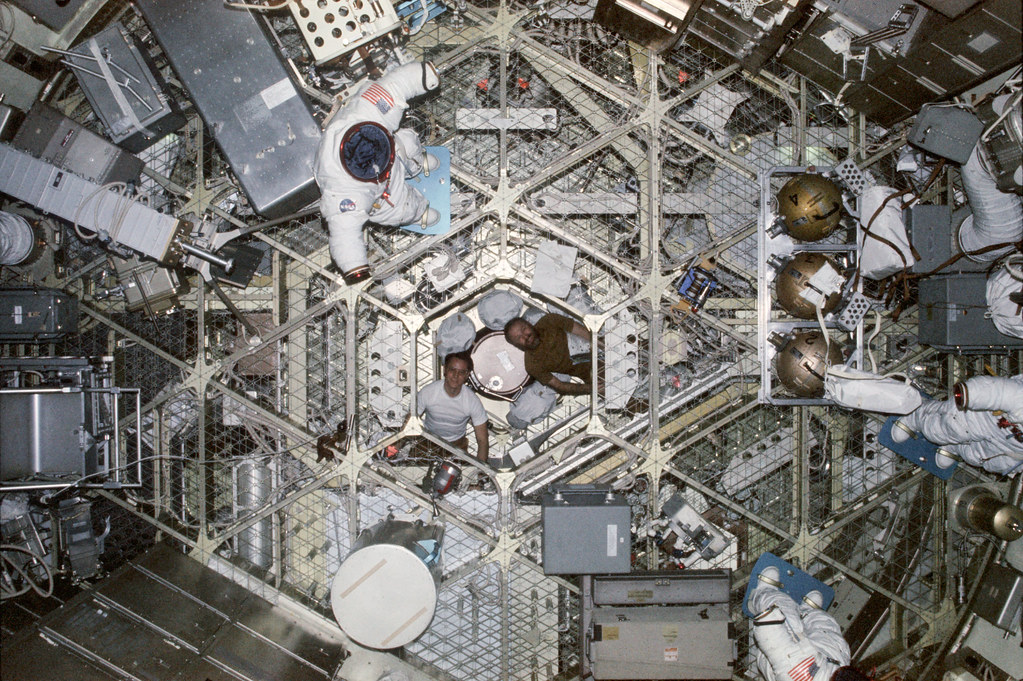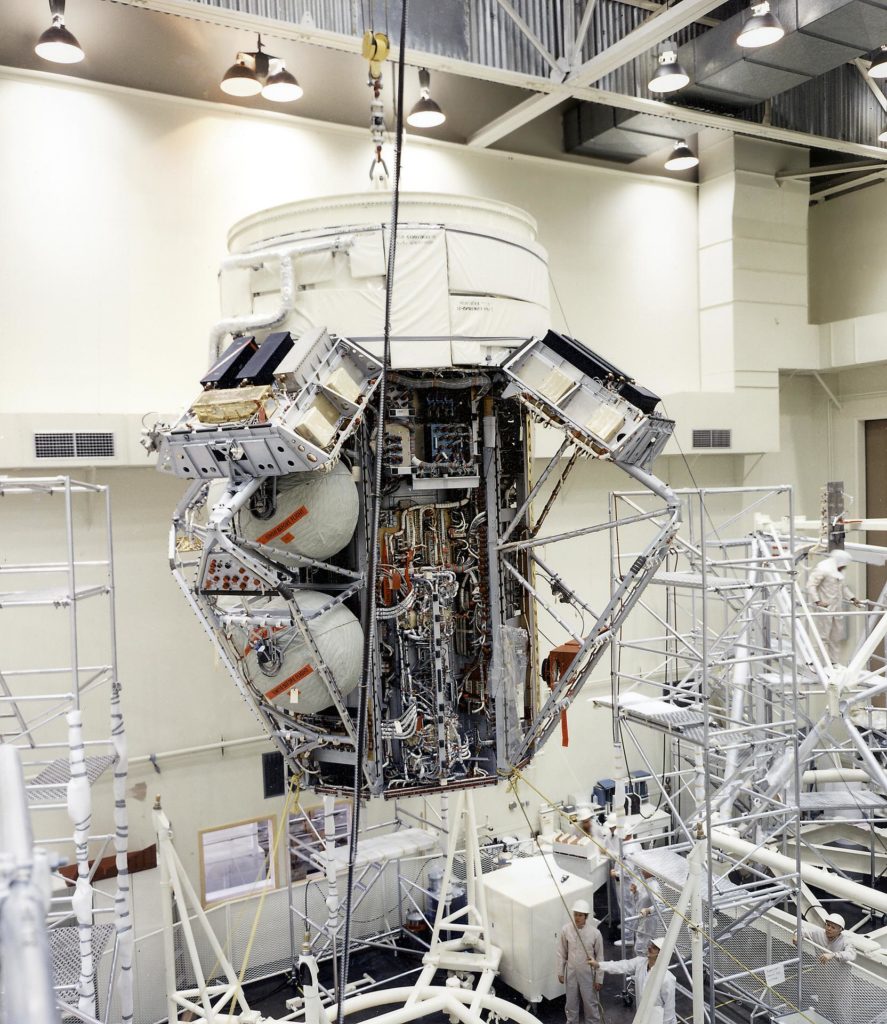Skylab was an outcome of the Apollo Applications Program set up by the National Aeronautics and Space Administration (NASA) in 1965 to adapt spacecraft and systems developed for the U.S. Moon landing program to a variety of scientific missions.
As a first step toward establishing a long-term manned platform in space, Skylab made use of a Saturn V Moon rocket, whose third stage was outfitted with two decks as a habitat and ready-to-use orbital workshop, and the command and service modules of Apollo spacecraft, which ferried the station’s crews and small amounts of supplies.

Skylab was 30.2 metres (99 feet) in length and 6.7 metres (22 feet) in diameter and had a mass of about 75,000 kg (165,000 pounds). Although limited by its consumable resources in the same way as the Soviet Union’s first-generation Salyut stations, Skylab was much roomier and capable of more research. Its main scientific instrument, the Apollo Telescope Mount, incorporated a number of component telescopes and other devices for observing the Sun over a broad range of the electromagnetic spectrum, from visible light through X-rays.
During Skylab’s ascent a thermal meteoroid shield was ripped off, which led to the loss of one of the lateral solar power arrays that was to supply electricity to the station and prevented full extension of the other. The first three-man crew deployed an improvised “parasol” sunshade (later fortified with an overlying sun shield) to prevent serious overheating of the station during their 28-day mission and released the jammed solar array.

Skylab hosted two additional three-man crews for missions lasting 59 and 84 days. Each of the three Skylab missions set a new space endurance record. Although plans called for Skylab to be used again with one of the first space shuttle missions boosting it to a higher orbit, increased solar activity caused its orbit to degrade faster than expected. On July 11, 1979, it entered the atmosphere, broke up, and scattered debris over the southeastern Indian Ocean and Western Australia.
According to britannica.com; en.wikipedia.org. Source of photo: internet








